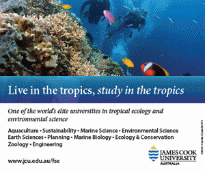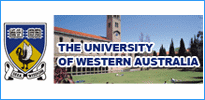Spain: Spain Education Profile
2010/11/21
Spain Education Profile
Schooling and Education in Spain
Introduction to the Spanish education system: understand what to expect from it...
State education is the responsibility of the Ministry of Education and Science (Ministerio de Educación y Ciencia), although the 17 autonomous regions have some responsibility for their own education system (including higher education).
The Law on the Quality of Education (Ley Orgánica de Calidad de la Educación - LOCE) covers the main points of the education law in Spain which are as follows:
- school is compulsory and free of charge for all children from age six to age sixteen
- the system includes levels of education adapted to suit students with special needs
- all students receive basic vocational training in secondary education
- religious instruction is available but optional
- special systems exist for artistic education and language learning
The law also determines that education authorities must promote the integration of foreign pupils and develop specific programmes in mainstream schools for those that do not have a good grasp of the Spanish language. "Bridge" classes provide facilities for students to study Spanish before joining an ordinary class, however all teaching in mainstream schools is delivered in Spanish.
State and Private Schools
Spain has privately-owned and state schools. Some of the private schools are funded by the state (concertados). Fees in these schools are generally lower than in other private schools. State school education is free, although in some autonomous regions books and materials must be paid for. Once a child enters primary school (primaria), vouchers (bonos) may be available to help pay for books.
Below is a table with English and Spanish translation of the levels and ages of schooling for children.
The School System
| Spanish | Guarderia | Escuela Infantil | Primaria | ESO | Universidad |
|---|---|---|---|---|---|
| English | Nursery school | Pre-school | Primary school | Secondary school | Higher education |
| Ages | Age 0-3 | Age 3-6 | Age 6-12 | Age 12-16 | From 16 |
Pre-School and Primary Education
The early years in the Spanish education system...
Infant education (educación infantil)
Educación infantil refers to the first six non-compulsory years of education which is split into two cycles of three years each. The first cycle is for children up to three and the second cycle, which is free, is for children aged three to six.
Nursery school (guardería)
Nursery school is normally available for children from the age of three months until the child is in their third year.
Guardería are either state run or private, though private facilities are usually more expensive. Guardería fees are paid monthly. Working mothers may be entitled to financial assistance at state run facilities.
Pre-school education (escuela infantil)
Although education for children under the age of six is not compulsory, many parents choose to enroll their children in pre-school when they are three, or are in their third year (a child born in November could start school at age two years and ten months). Children usually stay in pre-school until they are five or six years old.
The aim of early childhood education is to contribute to the physical, emotional, social and intellectual development of a child.
Pre-schools are often located within the same complex as a primary school. Nursery schools are usually separate (although facilities vary greatly depending on the area).
- For further information from the Spanish Ministry of Education about pre-school education: Click here (in Spanish)
Primary education (educación primaria)
Compulsory primary education begins at the age of six and lasts for six years. There are three two-year cycles. The first cycle (primer ciclo) is for children from age six to eight years of age. During these two years the child is assessed every term and parents are issued with a report. At the end of this cycle a child may need to repeat a year if they have not reached the education level needed to carry on to the next cycle.
The second cycle (segundo ciclo) is for children aged eight to ten years.
The third cycle (tercer ciclo) is for ten to twelve year olds and serves to prepare them for secondary education. A child may be asked to repeat a year if they have not reached the education level needed to carry on to the next cycle.
Children are graded in the following manner:
- Insuficiente (IN) - Insufficient
- Suficiente (SU) - Sufficient
- Bien (BI) - Good
- Notable (NT) - Very good
- Sobresaliente (SB) - Outstanding
- For further information from the Spanish Ministry of Education about primary school evaluations: Click here (in Spanish)
The primary curriculum includes natural and social sciences (conocimiento del medio natural, social y cultural), the Spanish language (Castellano) and literature, an autonomous language and literature if applicable (lengua cooficial), mathematics, physical education, plastic and visual arts, and a foreign language and optional Catholic religion (when a child starts school the parents will be asked whether they want their child to attend religious classes). Another foreign language may be added in the third cycle.
Secondary Education
Spanish education for young teens and youths...
Secondary education (Educación Secundaria Obligatoria - ESO)Compulsory secondary education (ESO or "instituto") (Educación Secundaria Obligatoria - ESO) begins at the age of 12 and lasts for four years. It is divided into two cycles, the first for students from age 12 to 14 and the second for students from 14 to 16.
Types of schools providing this education include: Institutos de Educación Secundaria, Colegios Privados and Colegios Concertados. Pupils receive specialised training at ESO and begin their preparation for the baccalaureate or vocational training.
Compulsory subjects include natural and social sciences, history and geography, physical education, plastic and visual arts, Spanish and an autonomous community language (if applicable), a foreign language, literature, mathematics, music and technology.
- To see how the school week is divided up for each subject: Click here (in Spanish)
In the second year of the second cycle, pupils choose two of the following four options: natural and social sciences, music, technology, and plastic and visual arts. The Catholic religion is an optional subject for all four years; non-Catholics may choose study periods instead. A second foreign language can be chosen during the second cycle.
As with primary education, a pupil can be required to repeat a year if they do not meet the required standards at the end of the school year. Children may only repeat the year once.
Once pupils have satisfactorily finished four years of ESO they receive a Secondary Education Certificate. (Graduado en Educación Secundaria). This certificate is necessary for those who want to continue to higher secondary education (Bachillerato) studies or intermediate vocational training.
- For further information from the Spanish Ministry of Education about secondary school evaluations: Click here (in Spanish)
Higher secondary education (bachillerato or formación profesional)
At the end of compulsory education (usually at age 16) pupils can go on to bachillerato studies or vocational training (formación profesional). Their education can usually continue at the same school they have been attending.
Bachillerato: This certificate is required to gain university entrance. Some of the courses studied are taken by all students, such as Spanish, a foreign language, Spanish history and physical education. However, students can choose to specialise in one of five different branches: arts, natural and health sciences, sciences and engineering, social sciences or humanities. At the end of their studies they receive the Título de Bachillerato if they have succeeded in all subjects.
- For further information from the Spanish Ministry of Education about the bachillerato: Click here (in Spanish)
- For further information from the Spanish Ministry of Education on the bachillerato curriculum: Click here (in Spanish)
Vocational training: Students divide their time between school studies and on-the-job training. Students who successfully complete their vocational training are awarded the Certificado de Técnico in the relevant field. This certificate allows them to work in areas related to their training, to pursue further training or to study for a bachillerato.
Higher education and university
To go on to further education, students must sit an entry exam (Prueba de Acceso a la Universidad, more commonly known as Selectividad). Higher education is not compulsory and fees are charged. Costs vary depending on the course taken.
Higher education is provided by public and private institutions known as either facultades universitarias, escuelas tecnicas superiores, escuelas universitarias, institutos universitarios, and other centres, notably the colegios universitarios. In addition to Spanish higher education facilities, there are a number of US and British universities with campuses in Spain.
International Schools in Spain
Spain has international schools following various curricula from well known education systems...
There are a large number of international schools in Spain, each following a particular educational curricula. These include the British GCSE and A-Level examinations, the American high school diploma and college entrance examinations (for example ACT, SAT, achievement tests and AP exams), the International Baccalaureate (IB) and the Spanish Bachillerato. They are all private schools and charge fees for attendance.
Some international schools provide primary education only, while others can cater for all ages including pre-school and nursery age children. In many instances children are taught by nationals from their country of origin.
There are some Spanish private schools that provide a wider choice of languages to study (including English and French).
Private international schools usually follow the school holiday calendar and opening times of schools in their "home country".
- For information from the European Council for International Schools (ECIS) on the availability of schools and entrance requirements
It is advisable to check if a school is recognised by the Spanish Education authorities and whether it belongs to an accredited organisation. Many British schools in Spain belong to the National Association of British Schools in Spain (NABSS) whose members are approved by British School inspectors. Information on international schools is also available from the home Embassies in Spain.
- Spain News
-
- AFGHANISTAN: UNWTO: International tourism – strongest half-year results since 2010
- ALBANIA: US LNG exports make European market more competitive
- CHINA: The immigrant success story that led Spanish police to a Chinese banking behemoth
- SPAIN: Spain's PM appeals to court over Catalan independence
- SPAIN: Spain: Rajoy Calls For Calm In Face Of ‘Authoritarian Delusions’ In Catalonia
- SPAIN: UNWTO Report on Gastronomy Tourism: sustainability and gastronomy
- Trending Articles
-
- SOUTH AFRICA: Nigeria and South Africa emerge from recession
- BAHRAIN: Bahrain issues new rules to encourage fintech growth
- UZBEKISTAN: Former deputy PM named Uzbekistan Airways head
- ARUBA: Director of Tourism Turks and Caicos after Irma: Tourism, visitors, hotels current status
- ANGOLA: Angola: Elections / 2017 - Provisional Data Point Out Qualified Majority for MPLA
- WORLD: How fair is our food? Big companies take reins on sourcing schemes













